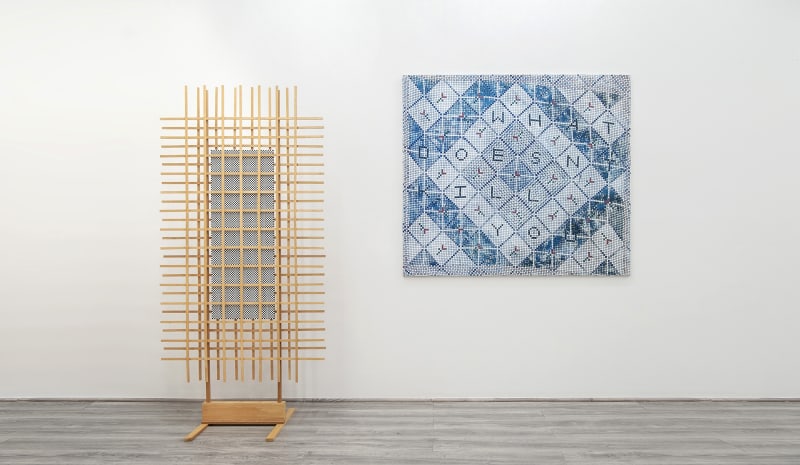Grids are central to the art of E.E. Ikeler and Ken Weathersby, but so are deviations from these self-imposed frameworks. The two artists, dueting in Pazo Fine Art’s “Emblemata,” employ repeated patterns, executed in paint, tile or wood. Yet the orderly motifs are subtly warped by materials or the artist’s hand.
Ikeler uses netting, cast tiles and pigmented resin to construct mosaic-like pieces with decorative arrangements and, occasionally, cryptic text. The Brooklyn artist arrays circles and arcs in designs that are essentially if not exactly symmetrical, and often keys multicolor compositions to a predominant hue. Among the sloganeering works is “What Doesn’t Kill You,” which spells out the opening of an oft-quoted Nietzsche aphorism that continues, “makes you stronger.” It’s a fitting maxim for artwork that’s splintered but sturdy.
Weathersby makes paintings and sculptures, both with elements of collage. Most of them include details of photos of ancient statues, set off by lattices that may be painted or assembled from wooden slats. Some of the photos are deployed with visual wit: One is decapitated, with its head replaced by a circle filled with checkerboard squares; another is truncated to its feet, which stand aptly at the bottom of a standing wooden rectangle that’s roughly proportionate to a human body.
Sometimes Weathersby skips the photo and directly contrasts painted templates with sculptural ones. The New Jersey artist places a painted checkerboard within a sort of wooden rack, and places a skinny picture of interlocked concentric boxes on a wooden stand. The latter piece has been shattered and reassembled, as if to certify the power of patterning. In both artists’ work, the grid is slippery but indomitable.


